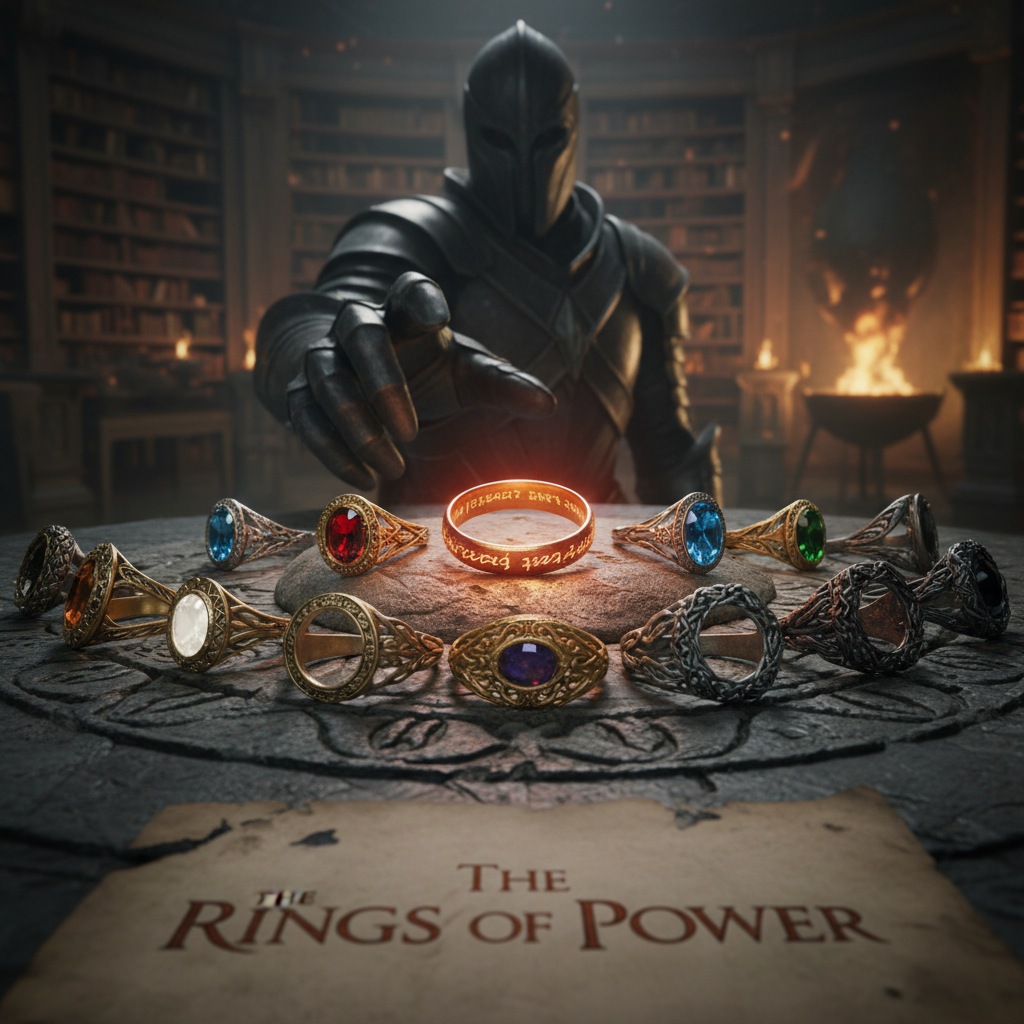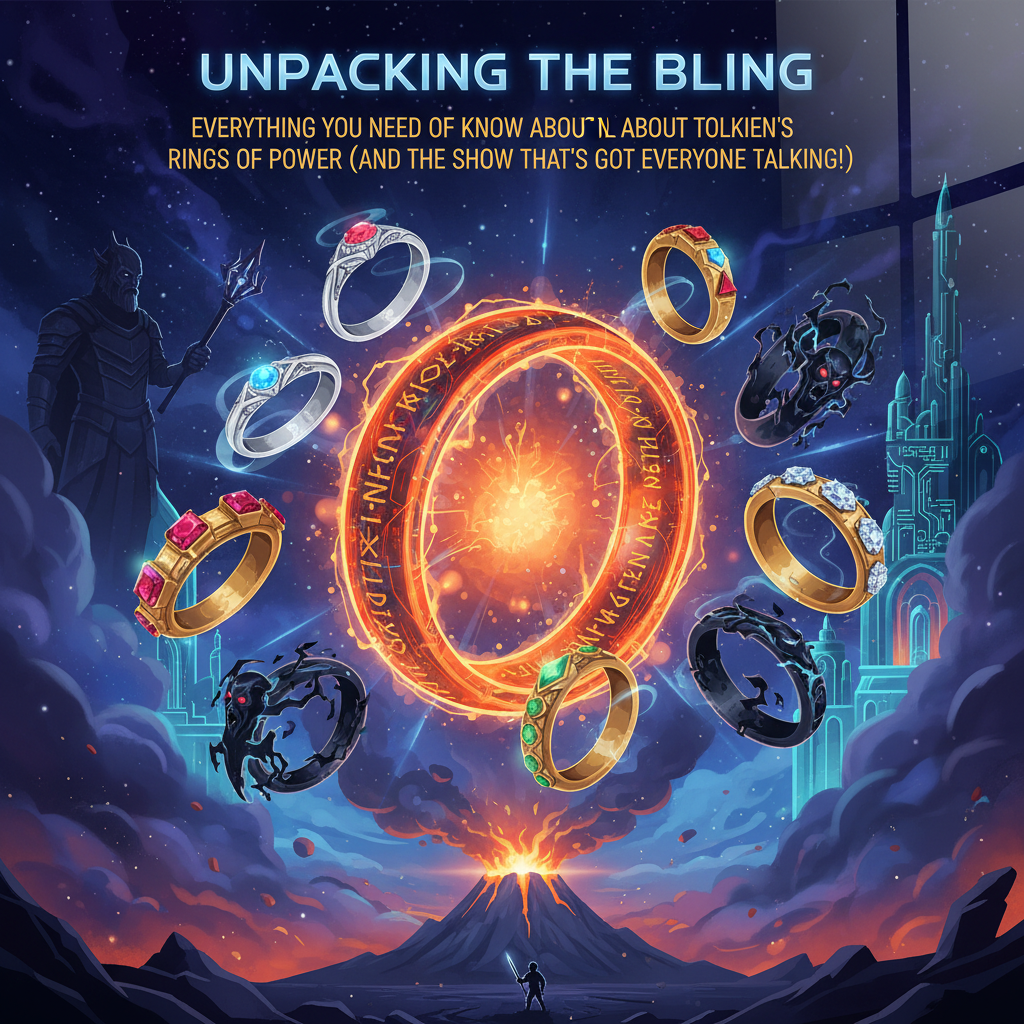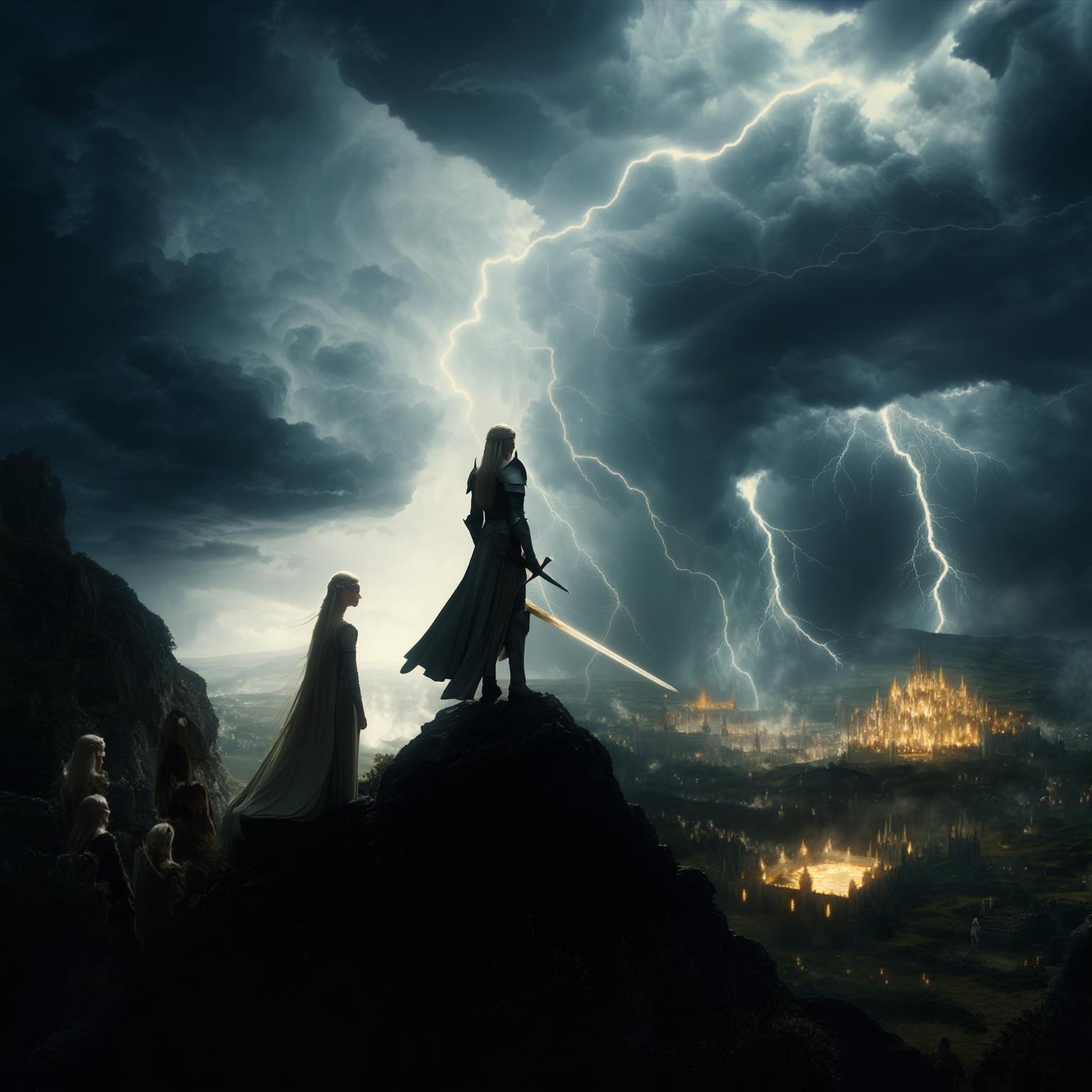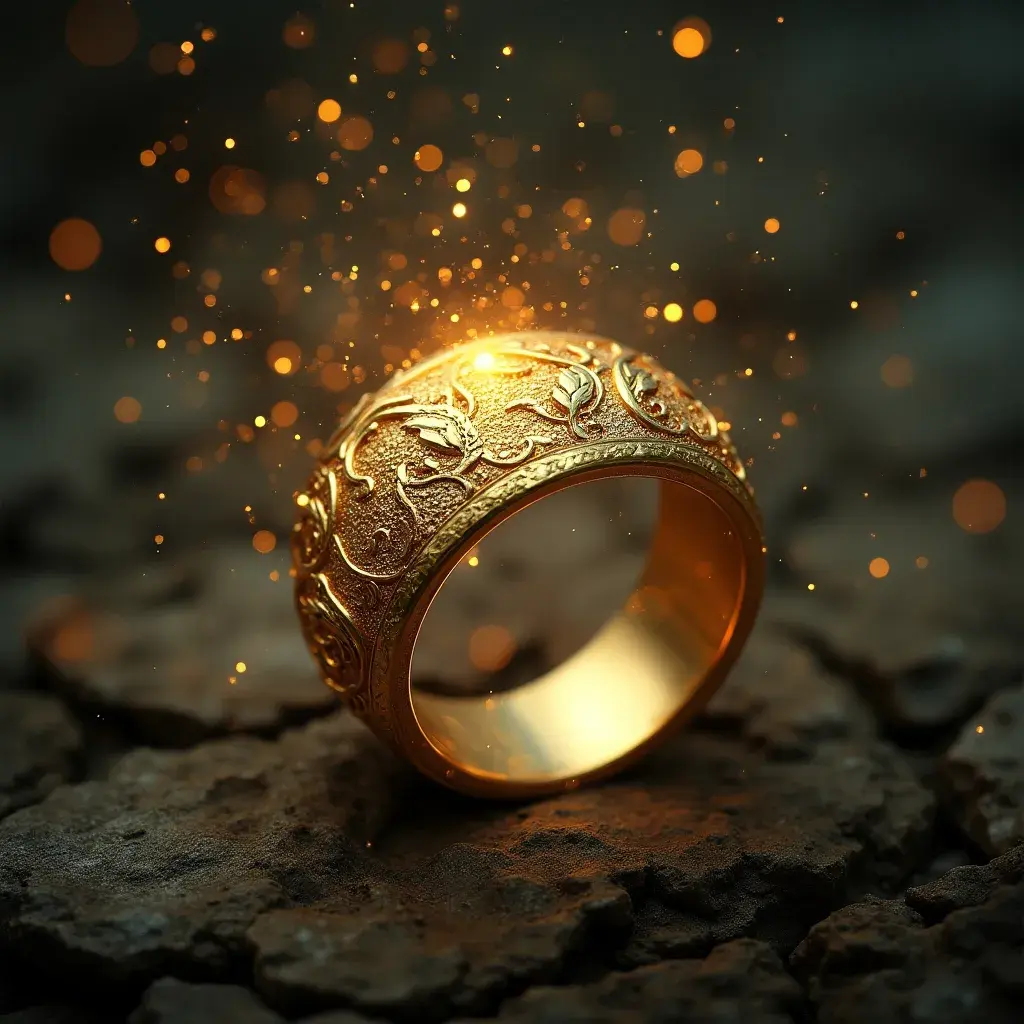Intro: More Than Just Shiny Jewelry
Ever wondered why Tolkien’s Rings of Power are such a big deal? They aren’t just flashy accessories; they’re the axis around which much of Middle-earth’s drama spins. These enchanted artifacts are symbols of temptation, corruption, and resilience, embodying Tolkien’s exploration of how power tests the soul. Their story stretches from ancient mythological roots to Amazon’s billion-dollar streaming gamble, The Rings of Power, a show that has reignited debates among Tolkien fans and casual viewers alike. The rings aren’t just props — they are a mirror, reflecting timeless questions about greed, control, and morality. Let’s take a deep dive into the lore, inspirations, and controversies surrounding these legendary bands of gold.

The Original Bling: What Are the Rings of Power?
A Quick Inventory
Forget your grandma’s dusty jewelry box. We’re talking about twenty Great Rings, forged in the Second Age of Middle-earth, each with unique destinies and purposes. Here’s the breakdown:
- The Three Elven Rings – Narya, Nenya, and Vilya:
Crafted in secret by Celebrimbor without Sauron’s touch, these were not weapons of domination but guardians of preservation. They sustained beauty, fostered healing, and protected against decay. They did not make their bearers invisible — instead, they allowed Galadriel, Elrond, and Gandalf (later bearers) to resist the creeping shadow. - The Seven Dwarven Rings:
Given to the Dwarf-lords, they magnified natural Dwarven traits: resilience, craftsmanship, and an unquenchable lust for treasure. Instead of enslaving them, the rings inflamed greed, driving kingdoms to both great wealth and eventual ruin. Unlike men, the Dwarves could not be wholly subjugated — a subtle but fascinating detail in Tolkien’s view of their stubborn nature. - The Nine for Mortal Men:
A poisoned gift. These mortal rulers gained long life and terrifying power, but the cost was their humanity. One by one, they withered into the Nazgûl (Ringwraiths) — deathless servants bound entirely to Sauron’s will. They are the chilling embodiment of power’s ultimate corruption. - The One Ring:
Forged in the fires of Mount Doom, Sauron poured his own malice and essence into this “Master Ring.” Its sole purpose: to dominate the others. Invisibility was a side-effect — its true power was ensnaring wills. The Ring became not only an artifact of evil but an extension of Sauron himself, explaining why its destruction spelled his downfall.
Sauron’s Shady Business Plan
Sauron disguised himself as Annatar, the Lord of Gifts, befriending Celebrimbor and the Elves of Eregion. Under his “guidance,” most of the Rings were crafted — but Sauron’s real play was always the One Ring. His betrayal was so devastating that it reshaped Middle-earth’s political landscape, triggering wars and setting the stage for The Lord of the Rings millennia later.
The Bigger Picture
The Rings symbolize much more than magical tools: they are allegories of human (and non-human) vulnerability to corruption. Tolkien, who lived through two world wars, infused them with warnings about ambition, unchecked power, and technological hubris.

Mythical Sparkle: Where Did Tolkien Get His Ideas?
- Norse & Germanic Roots: The cursed ring Andvaranaut in Norse mythology and Wagner’s Ring Cycle (Der Ring des Nibelungen) both feature powerful rings that bring doom to their bearers. Tolkien denied Wagner was a direct influence, but the parallels are unmistakable.
- The Ring of Gyges (Plato): The ancient Greek philosopher posed the moral dilemma: if you had a ring granting invisibility, would you remain just? Tolkien echoes this timeless question through the corrupting allure of the One Ring.
- The Nodens Connection: Tolkien once studied a Roman curse tablet about a stolen ring at an archaeological site in Gloucestershire — on a hill called Dwarf’s Hill. This real-world coincidence may have helped inspire his myth-making.
- Anglo-Saxon & Celtic Talismans: Rings in early European cultures often carried runes, blessings, or curses. For Tolkien, a philologist, the linguistic and cultural symbolism of rings provided fertile ground for his legendarium.
- Tolkien’s Mythic Project: More than entertainment, Tolkien sought to create a “mythology for England,” one that blended languages, histories, and legends into a uniquely British epic tradition. The Rings are at the very core of that project.
The New Kids on the Block: Amazon’s Rings of Power Series
- A Billion-Dollar Gamble: Amazon spent over $715 million on Season 1, making it the most expensive TV series ever produced.
- Strengths:
- Stunning visuals and production design rivaling cinema.
- Sweeping score blending the work of Howard Shore and Bear McCreary.
- Bold ambition in tackling Tolkien’s Second Age, a period barely sketched in the appendices.
- Weaknesses:
- Divided reception: gorgeous to look at, but pacing, character arcs, and dialogue often frustrated fans.
- Lore compression: thousands of years of history squeezed into a single lifespan, creating dissonance for purists.
- Season 2 (2024):
- Darker tone with Sauron’s identity taking center stage.
- Some improved narrative cohesion, but still polarizing.
- Viewership dipped slightly, though committed fans remain engaged.
- What’s Coming:
- Season 3 promises the War of the Elves and Sauron, the forging of the One Ring, and likely the first steps toward the Fall of Númenor.
- Amazon plans five seasons, culminating in the War of the Last Alliance — the battle glimpsed in the opening of Peter Jackson’s Fellowship of the Ring.

Storms in Middle-earth: Why Everyone’s Talking (and Arguing)
- Lore Wars: Hardcore Tolkien scholars vs. casual fantasy fans — one group craves fidelity to the texts, the other embraces reinterpretation.
- Compressed Timelines: A necessary evil for TV storytelling but a sore point for lore purists.
- Character Redesigns:
- Warrior Galadriel: praised by some as empowering, rejected by others as unfaithful.
- Princess Disa (a beardless dwarf): spurred passionate debate about dwarf-lore accuracy.
- Even Elven hairstyles ignited fierce online battles.
- Diversity Casting: Applauded by many, condemned as “wokeness” by others — leading to review bombing campaigns that Amazon countered with a 72-hour delay on reviews.
- Tone & Dialogue: Some critics argue it feels more like “generic fantasy” than true Tolkien, while others remind us that adaptation of appendices into hours of TV inevitably requires invention.
Final Thoughts: Beyond the Gold and Glamour
Whether in Tolkien’s meticulous writings or Amazon’s glossy adaptation, the Rings of Power endure as symbols of temptation, corruption, and the fragile hope that resists them. They connect us to ancient myths while still sparking modern debates about fidelity, adaptation, and cultural storytelling.
The rings remind us of a question as old as Plato and as fresh as today: What would you do if great power was placed in your hands?
So, where do you stand? Are the Rings of Power timeless myth, corrupted adaptation, or something in between? Share your thoughts — Middle-earth has always thrived on passionate voices keeping the story alive.
Leave a comment
Your email address will not be published. Required fields are marked *















